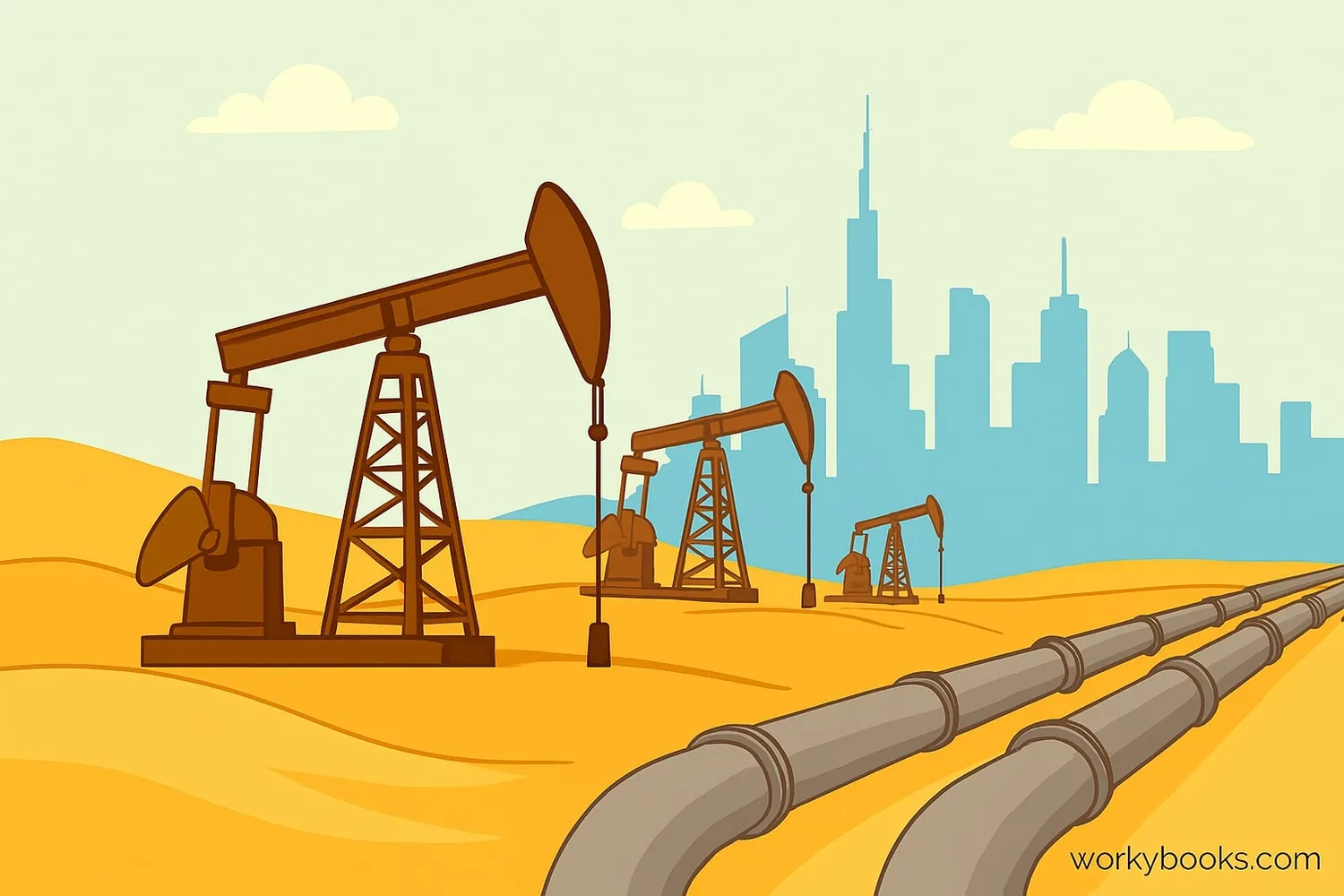The Arabian Peninsula - Definition, Examples, Quiz, FAQ, Trivia
Discover the geography, countries, and importance of this fascinating region
What is the Arabian Peninsula?

The Arabian Peninsula is the world's largest peninsula, located in Southwest Asia. It's shaped like a boot and is surrounded by water on three sides: the Red Sea to the west, the Arabian Sea to the south, and the Persian Gulf to the northeast.
This region is important because it's the birthplace of Islam and home to some of the world's largest oil reserves. The Arabian Peninsula includes countries like Saudi Arabia, Yemen, Oman, and several others that we call the Gulf states.
Did You Know?
The Arabian Peninsula is about 3.2 million square kilometers - that's almost as big as India!
Geography & Climate

The Arabian Peninsula has a mostly desert climate with extremely hot days and cool nights. The landscape is dominated by the Arabian Desert, one of the largest continuous sand deserts in the world.
Important geographical features include:
Rub' al Khali
The "Empty Quarter" - the world's largest sand desert
Red Sea Coast
Famous for coral reefs and marine life
Persian Gulf
Shallow sea with important shipping routes
Hijaz Mountains
Mountain range along the Red Sea coast
Wadis
Dry riverbeds that fill during rare rains
The climate is extremely dry, with some areas receiving less than 50mm of rain per year. Temperatures can reach 50°C (122°F) in summer! This desert climate has shaped how people live in this region for thousands of years.
Climate Challenge!
The Arabian Peninsula has the world's highest recorded sand dune - over 300 meters tall! That's taller than the Eiffel Tower!
Countries & Culture

The Arabian Peninsula includes seven countries known as the Arab states of the Gulf:
The culture is deeply influenced by Islam and traditional Bedouin (desert nomad) ways of life. Arabic is the main language spoken throughout the region.
Important cultural elements include:
• Traditional clothing like thobes and abayas
• Delicious foods like dates, hummus, and shawarma
• Beautiful Islamic architecture
• World-famous hospitality
• Camel racing and falconry
• Rich traditions of poetry and storytelling
Cultural Connection
The Arabian Peninsula is the birthplace of coffee! The word "coffee" comes from the Arabic word "qahwa".
Importance & Resources

The Arabian Peninsula is extremely important globally because it contains the world's largest oil reserves. Countries like Saudi Arabia and Kuwait are among the top oil producers in the world.
Other important resources include:
• Natural gas
• Precious metals
• Fisheries
• Date palm agriculture
• Growing tourism industry
Energy Center
Produces about 30% of the world's oil
Water Challenges
Relies on desalination for fresh water
Modern Cities
Home to futuristic cities like Dubai and Doha
The discovery of oil transformed the Arabian Peninsula from a region of nomadic tribes to modern nations with advanced infrastructure. Today, these countries are investing in diversifying their economies beyond oil.
Arabian Peninsula Quiz
Test your knowledge about the Arabian Peninsula with this quiz! Answer all 5 questions to see how much you've learned.
Frequently Asked Questions
Here are answers to some common questions about the Arabian Peninsula:
Fun Arabian Peninsula Trivia
Discover some amazing facts about the Arabian Peninsula!
Desert Wonders
The Rub' al Khali ("Empty Quarter") desert is so large that it covers parts of Saudi Arabia, Oman, Yemen, and the UAE - about the size of France!
Modern Marvels
The Burj Khalifa in Dubai is the world's tallest building at 828 meters (2,717 feet) - that's more than 2.5 times taller than the Eiffel Tower!
Ancient Trade
The Arabian Peninsula was a center of the ancient incense trade. Frankincense and myrrh from this region were more valuable than gold in ancient times!
Water Creation
Saudi Arabia produces the most desalinated water in the world, turning seawater into fresh water to supply its cities and agriculture.


